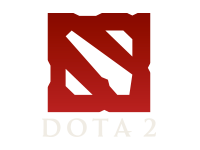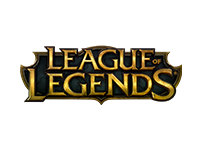It’s been only a month since the last premier CS:GO tournament, but it feels more like centuries. The landscape of top tier CS has been completely transformed, creating an entirely new environment where anyone could come out on top. Between the roster changes, online slumps, and unknown teams, nothing is certain. This is an event that will rewrite the narrative of Counter-Strike.

The Eastern Threat
The hype around the Asian scene has long since fizzled out. Gone are the days where Savage or crazyguy could inspire endless discussions of potential or growth. Almost a year after TyLoo became the first, and only, Asian team to make the playoffs of international event, reality is sinking in. Occasional upsets are overshadowed by the general downward trend of a region already far below the top. Serious questions are being raised of whether Asia will ever be able to come close to the European or even North American level of play. On our current path, it seems unlikely that the Asian scene will ever mature.
But there are always exceptions. Among all of the internationally incapable ickiness that Asia has to offer, MVP Project stands out. In a region where young talent is a premium and tactics are non-existent, MVP are one of the few with both. Their results at the last season of Starladder were uninspiring, but the roster moves they’ve made since then give them the depth and leadership to threaten the Western bubble that’s gone so long without being popped.
The most unexpected change by MVP P was the addition of former 1.6 legend and Team 3D shotcaller, Rambo, as a coach. Rambo should make huge improvements to the one-dimensional strategy that plagued MVP Project through their last international appearance. Argency was successful at setting up smart, successful CT aggression, but the strength of MVP’s strategy stopped there. On T side, MVP looked completely lost, over-reliant on cheesy force buys with low chances of success. Rambo has the experience and knowledge to improve this major weakness, giving MVP the flexibility to play standard when needed.

Rambo wasn’t the only exciting new face on this lineup. At just 16 years old, MVP’s newest recruit, kAyle, has already established himself as one of the most exciting young players from the Asiatic region. Despite his age, kAyle has plenty of experience with CS:GO. By mid 2016, kAyle had become the star of autocracy.kr, a team that beat MVP Project on LAN. Obviously, the small VSL studio in Seoul cannot compare to the stadium atmosphere of Palace Ukraina, but with such an experienced coach behind him, kAyle could be Starladder’s biggest surprise.
For the Asian CS:GO scene, MVP Project is somewhat of a last resort. China is only falling farther behind the rest of the pack. Instead of focusing on serious issues like coordination and leadership, Chinese teams have continued to rely solely on individual skill impossible to translate to an international stage. This hyperfocus on flashy skill has even drained potential from other parts region, as Southeast Asian stars leave their national teams to join dead-end Chinese squads. MVP may not have the flicks of Savage or BnTeT, but they do have the experience, communication, and leadership to make a splash at Starladder.

Will the Magic Return?
There are certain things in life that will never change. Water will always be wet, the sky will always be blue, and NiP will always kick their fifth player for no reason. Pyth is now the third Ninja to meet this unfortunate fate, despite his strong performance over the past few months. In his place, NiP recruited draken, the former AWP for Epsilon. The decision to add a true primary AWP is a dangerous one for NiP. In theory, the more clearly defined roles of this roster will create a more comfortable, coordinated team. However, the removal of a strong rifler puts more pressure on GeT_RiGhT, who hasn’t reached the consistency of his former self in months.
It’s difficult to see the road to success for NiP. In the most competitive era in CS:GO history, NiP’s reliance on F0rest and GeT_RiGhT is not sustainable. When compared to top teams, like SK, Astralis, or VP, the Ninjas are severely lacking in depth. At this stage, consistent success for NiP seems impossible, regardless of draken’s performance.
That’s where the magic comes in. No matter the circumstances, NiP always seem to miraculously pull through just when it would make the best story. At Starladder Season 2, Maikelele won his first ever premier event as a stand-in, a year and half after being kicked off NiP’s main roster. At IEM Oakland 2016, pyth returned from nearly 6 months of recovery to lift the 1st place trophy. These are the most unlikely events for the Ninjas to win, and yet they always manage to find the magic inside themselves to take it all. Is it really that crazy to imagine another magical moment in Kiev?

The possibility of a Pyjama-clad upset becomes even more likely when considering their online results. In the 8 maps they’ve played since picking up draken, NiP have gone 7-1, as opposed to the 1-7 record they held before the roster move. The most promising sign of a serious turnaround is the performance of GeT_RiGhT. NiP’s elimination in the major qualifier marked the beginning of the worst slump of GeT_RiGhT’s career. Over the span of several months, the supposed superstar only went positive four times. His lacking performance was the leading factor in the Ninjas’ decline.
Fortunately for loyal Swedish fans, Draken’s presence seems to be making a serious difference. Since the shuffle, GeT_RiGhT hasn’t just returned to consistency, he’s returned to consistent success, showing flashes of brilliance reminiscent of the days when he and f0rest were the best players in the world. If he can maintain that level going into Kiev, NiP will. Everything is in place for a magical tournament. Is just a matter of whether or not NiP can pull through.

The Status of Superteams
The announcements of the new G2 and Fnatic rosters were met with more anticipation and excitement than any other roster move in CS:GO history. After months of failed shuffles and mutual underperformance, the Fnatic roster that made history with 6 consecutive trophies at premier events reformed. As NiP fell farther into their slump, Fnatic was hailed as the savior of Swedish CS. In the meantime, France was making its own super team.
For the first time ever, shox and kennyS joined forces, creating the most skilled roster France has ever created. At long last, all the best French talent was concentrated in one team, who would lead France back to the glory days of VeryGames and LDLC. Of all the roster shuffles in the past year, none have been as immediately significant as this one.

Unfortunately, not every team has the magic to carry out their storylines. Neither of these lineups have come close to the massive amounts of hype that surrounded their return. Until Starladder, G2 hadn’t even able to qualify for a LAN, much less win one. Fnatic have attended every premier event this year, but their performance has been decidedly lackluster. 2 months after their creation, Fnatic’s greatest accomplishment is coming 4th in their group at IEM Katowice, a far cry from the early 2016 results they hoped replicate.
Starladder is a turning point for these teams. For 2 months, they’ve been given the benefit of the doubt after every bad result. G2’s glaring tactical and chemical deficiencies have been written off as growing pains of a future powerhouse. Fnatic’s lack of improvement has been dismissed with results from over a year ago. Now is the time when the tinted glasses have to come off, and their results must be taken at face value. Disregarding hype, hope, or national pride, Starladder will decide whether or not they deserve the hype.













